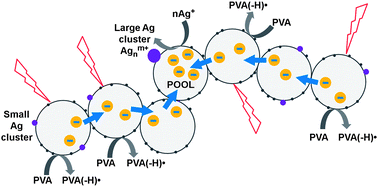This feature article summarizes recent research on and development of semiconductor-based photocatalyst materials that are applicable to environmental remediation and/or chemical synthesis purposes. A wide variety of TiO2 particles and/or films have been studied during the past 30 years because they are the most stable and powerful photocatalysts leading to the degradation of various organic pollutants. The photocatalytic performance of other semiconductor materials such as ZnO, SnO2, WO3, Fe2O3 and CdS has also been intensively investigated. A general limitation in the efficiency of any photocatalytic process is the recombination of the photogenerated charge carriers, i.e., of electrons and holes, following bandgap illumination. Considerable efforts have been made to suppress this recombination and hence to enhance the charge carrier separation and the overall efficiency by means of coupling of different semiconductors with desirable matching of their electronic band structures, or incorporation of noble metal nanoclusters onto the surface of semiconductor photocatalyst particles. Modification of the physicochemical properties, such as particle size, surface area, porosity and/or crystallinity of the semiconductor materials, and optimization of the experimental conditions, such as pH, illumination conditions and/or catalyst loading, during photocatalytic reactions have also been carefully addressed to achieve high reaction rates or yields. To utilize solar energy more efficiently, i.e., to extend the optical absorption of the mostly UV-sensitive photocatalysts into the visible light range, numerous research groups have contributed to the development of novel visible light active photocatalysts. With the application of semiconductors with narrower bandgaps such as CdS, Fe2O3 and WO3 being straightforward choices, doping of wide bandgap semiconductors like TiO2 has been the most popular technique to enhance the catalysts' optical absorption abilities. Research on mixed-oxide-based semiconductor photocatalysts with deliberately modulated band structures has also attracted tremendous attention in the past decade, concentrating on, for example, the generation of H2 and/or O2 from H2O splitting, and the degradation of organic pollutants under visible light irradiation. Both theoretical calculations and experimental results have convincingly shown that the developed materials can serve as highly efficient photocatalysts that are both environmentally and economically significant.


 Please wait while we load your content...
Please wait while we load your content...